2008 Honda Civic Clutch Problem
On the initial road test and under normal driving conditions, the car seemed to be working fine. However, when the car was driven a little more aggressively, the customer’s concern became apparent. If you released the clutch pedal quickly, the pressure plate seemed to react slowly. Upon further inspection, we noted that when the vehicle was stationary with the engine off and the clutch pedal was partially depressed, it would take some time for the pedal to rise back up to the pedal stop.
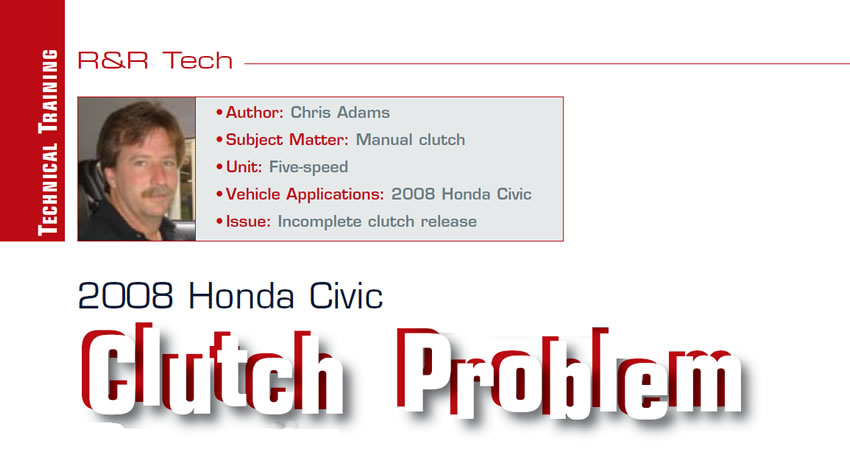
Back Off to Control Volatile Situations and Make Better Sales
Often, holding your tongue while figuring out the right responses to get you what you want is the best way. You can turn a demanding or difficult customer around, gain the respect of friends and employees, and get Aunt Sarah to understand that you’re doing what’s right for you and your family. Some might consider it a form of weakness not to jump right in to protect your honor or show a customer how far off base he is, but it can be a useful tool in getting people to realize just how wrong they might be or what’s best for them in their situation.
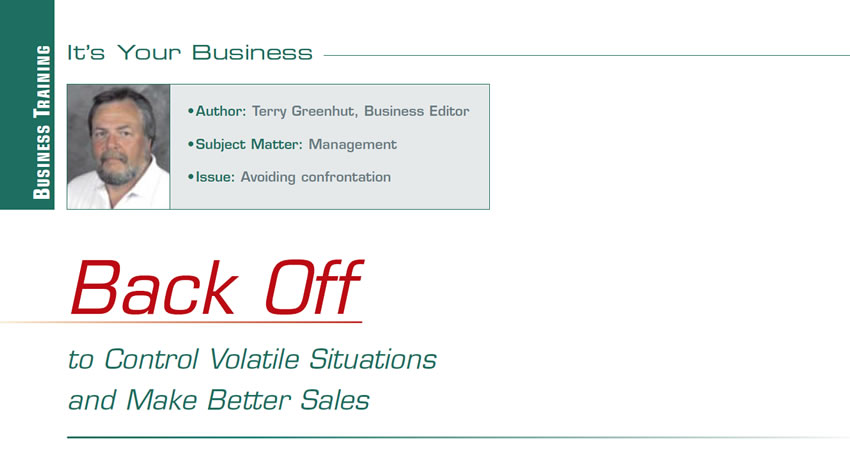
If You Don’t Know How It Works, How Can You Work on It?
Manual transmissions – whether three-speed or 16-speed units, rear- or front-wheel-drive – all work the same way. To be usable, the engine’s torque must be broken down into manageable steps or speeds. The result is a set of gear ratios allowing the vehicle to go from a dead stop to road speeds fuel-efficiently. The first-gear ratio will be high enough numerically to move the vehicle’s weight from stop to go. The next sets of gears will have descending numerical ratios to increase vehicle speeds smoothly while increasing fuel efficiency.
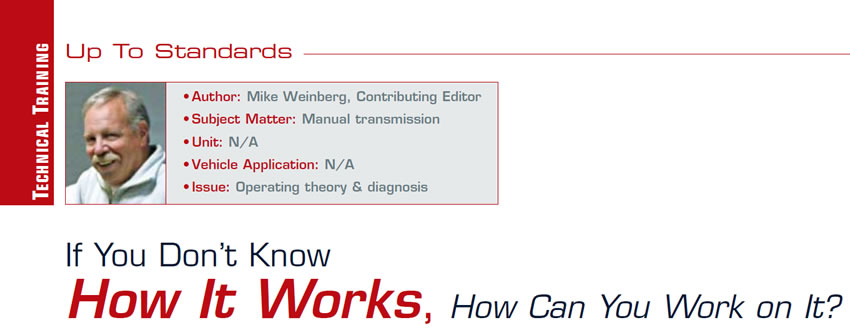
AB60E 6-Speed (A750/761E big brother)
With all the changes swirling around the transmission world today, it’s no wonder that manufacturers look to benefit from “economy of scale.” Millions of dollars and much time are devoted to developing a completely new transmission platform. Once a new transmission design is implemented and proven successful, it only makes sense to enhance and expand upon it.
Take the case of the Aisin-produced A750E five-speed RWD, which was launched in 2003 for Lexus and Toyota. The Aisin handle for that model is TB-50LS. The A750E was a departure from not only the A340 family of transmissions but even the A650E five-speed. This new design was developed with an eye on the future.

Toyota U151E-U250E Vacuum testing
From the TASC Force we reprint a series of in-depth test instructions for checking the serviceability of valve bodies.

Power of Collective Wisdom Solves ‘Fretting Corrosion’
Now, at this stage I believed that my customer was a victim of either high-mileage fretting corrosion or high-mileage fracturing of cold-solder joints. Either way, “smacking” was the big clue that can temporarily solve either of these issues, and I believed I had a good shot at repairing my customer’s minivan, even though I could not get it to act up. At this point in my detective work, I felt like an attorney attempting to prosecute a murder case without the benefit of a murder weapon – or a body. Luckily, there are precedents for convicting when there is no body, just as you and I have repaired a vehicle or two without locating a tangible root cause.
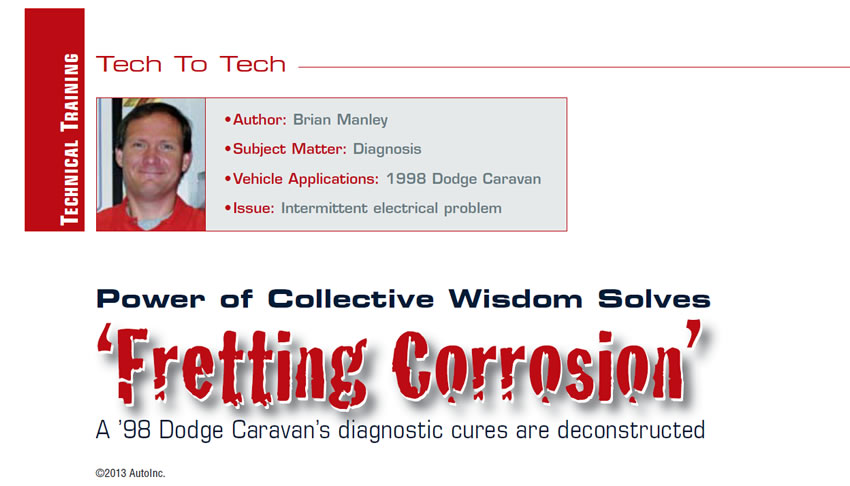
We’re Doing it Wrong – the World is Flat
The industry is nearing a crossroads. We’re not quite there yet, but it’s coming soon.
It’s the perfect storm: new technologies in transmissions, new buying motives and habits among vehicle owners, new media and marketing options, new competitive forces from general-repair shops and consumer-focused new-car dealers, new this, new that.

November 2013 Issue
In This Issue
4L60-E 3-4 clutch failure: Another contributing factor
4T40E 1-2 shift condition: Read between the lines
Crankshaft sensor or flex plate: Which item is it?
Axle-seal leaks: Choose the right seal
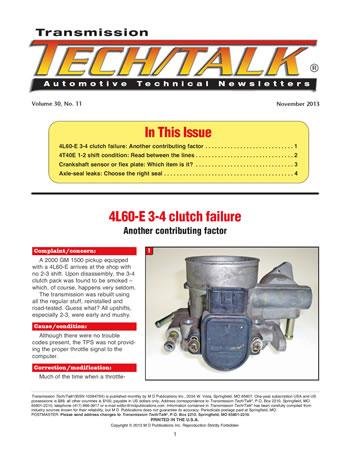
Is the Tail Wagging the Dog?
Do you know how many leads you got last week? How many were lost? How many were converted into a sale? How many units did your builder build last week? What was your average parts percentage on major repairs? If you cannot answer core questions like these, the tail is probably wagging the dog at your shop.

